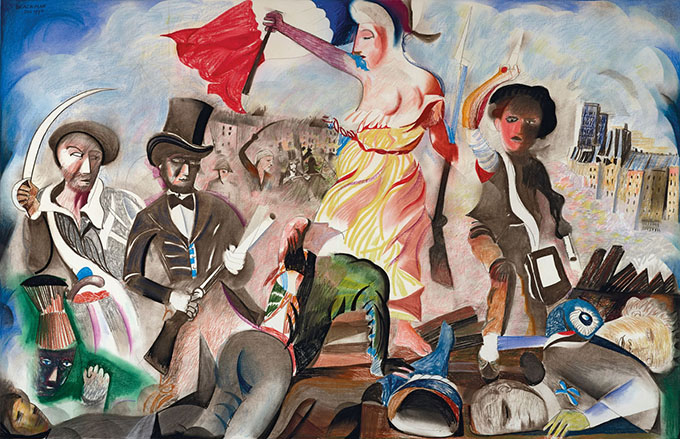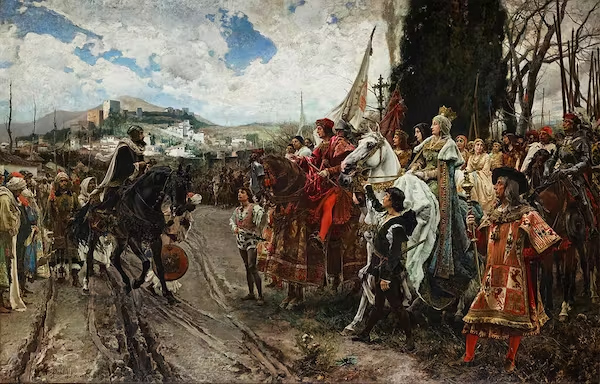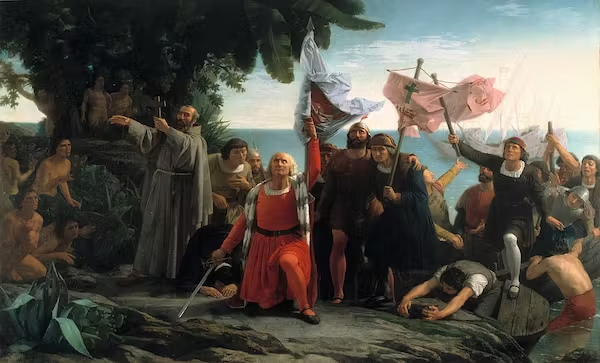 With the development of artificial intelligence and the images generated by said technology that flood the networks, several questions arise. What weight can the increasingly abundant presence of this type of image have on our understanding of history? How is this going to influence the vision that society is building of history? What might be the consequences for the teaching of history in schools?
Let us briefly analyze the intricacies of this relationship.
With the development of artificial intelligence and the images generated by said technology that flood the networks, several questions arise. What weight can the increasingly abundant presence of this type of image have on our understanding of history? How is this going to influence the vision that society is building of history? What might be the consequences for the teaching of history in schools?
Let us briefly analyze the intricacies of this relationship.
A 21st century problem?
Given the existing alarm, one aspect that is considered key must be remembered: the generation of images to illustrate events in history has always existed. When Velázquez painted The Surrender of Breda or when Goya recreated The Executions of May 3 in Madrid, there was an intention and a narrative. When we think of these episodes in Spain, our memory pulls from these images, generated, in this case, by human intelligence. But are these a representation of the past? To what extent was this similar to what these masterpieces show? It is true that Velázquez and Goya were contemporaries of the events they narrated, but that did not prevent their bias or their positioning (or that of their patrons), which influenced how the events were represented. Even more remarkable is when certain works of art are made centuries after the events they describe but are constituted as reliable representations of the past in our memory. What happens if there is talk of the surrender of Granada? What image comes to mind when you have to imagine Columbus arriving in America? A clear scene of the event immediately appears in our minds, which has many similarities with the historical paintings of the 19th century, used ad nauseam in textbooks, popularization books or on networks.
The Surrender of Granada , carried out by Francisco Pradilla y Ortiz in 1882. Wikimedia Commons
 Painted almost four centuries later, they have little to do with the events they try to represent. In their creation, the painters were nourished by the collective memory that society preserved of those feats or facts and, mainly, the message that they wanted to narrate: the exaltation of key characters and milestones for the master narrative of a nation, of the origin and development of Spanish nationality .
So, we are talking again about images generated by human intelligence with a clear narrative intention.
Painted almost four centuries later, they have little to do with the events they try to represent. In their creation, the painters were nourished by the collective memory that society preserved of those feats or facts and, mainly, the message that they wanted to narrate: the exaltation of key characters and milestones for the master narrative of a nation, of the origin and development of Spanish nationality .
So, we are talking again about images generated by human intelligence with a clear narrative intention.
Accurate photographs?
But it is not necessary to go that far back in time: photography, the quintessential method of graphic documentation of events and news, is not innocent either. It is also determined by the photographer’s narrative purpose: what do I leave within the frame? What moment do I select? What colors do I use? Nothing is left to chance. And yet, all these documents (sources of history) have been uncritically consumed for decades, as real testimonies of the past, as exact photographs of what happened , and assumed in our memory without too much reluctance.Is there greater risk?
The risk now, with the advent of artificial intelligence, is that the generation of this type of image (intentional, biased and partial) is much easier and is in everyone’s hands: it is massive. We can all do it. You no longer have to have exceptional skills. With a computer or a mobile is enough. And this is clearly going to have a direct impact on how the past is recreated, how history is understood and how memory is built . Indeed, as the research shows, the visual (whether it be cinema, TV, video games or, now, AI) clearly affects what is remembered, memory, and has a great weight in learning history . It even surpasses what is read or learned in the classroom. Therefore, the massive influx of images is going to have a clear effect on that understanding of the past. It will influence the way of thinking about certain topics, especially if one takes into account that some of these images will be created expressly to generate opinion and misinformation. And it is that the power of the image in the conformation of knowledge is remarkable, as shown by some investigations .Making pictures of Trump getting arrested while waiting for Trump's arrest. pic.twitter.com/4D2QQfUpLZ
— Eliot Higgins (@EliotHiggins) March 20, 2023